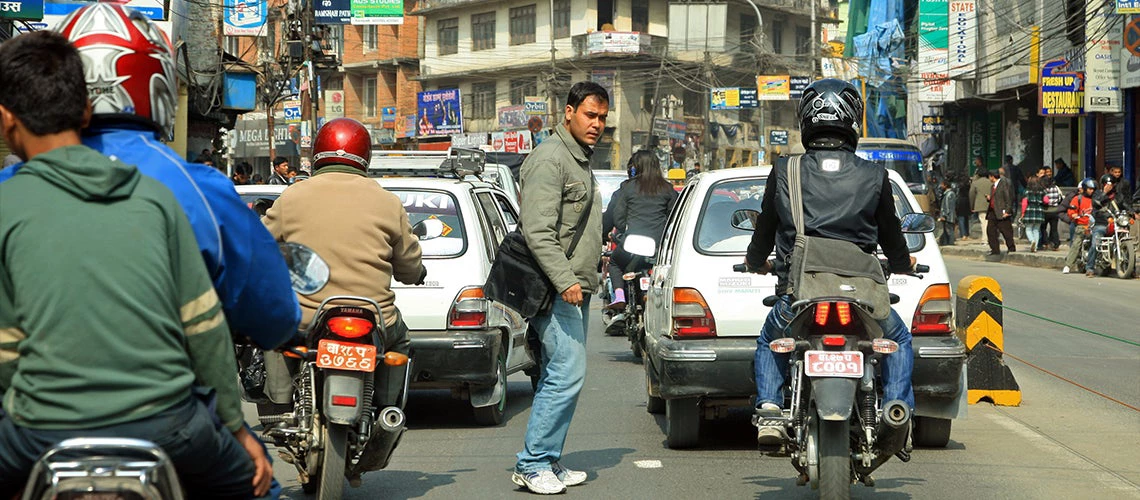 Street traffic
Street traffic
2022 draws to a close: another turbulent year, as a dire climate emergency, protracted war, and a lingering pandemic collide with fuel and food crises, impending recession, heightened poverty, and inequality.
But innovations also abound across the world. It is no surprise, therefore, that our most-read blogs center on what can be done. First, each of the top 5 blogs in some way addresses problems and solutions that have been directly impacted by COVID-19. Second, almost every blog spotlights new and innovative technological solutions, better data, and measurement tools. Third, the anxiety around climate change has likely drawn readers towards actions that address climate impacts. These lessons from our top five blogs come on the heels of both COP27 and COP15, while on our end, the World Bank end continues to implement its Climate Change Action Plan, with a focus on cities and making them resilient to multiple crises.
First a recap of the top five.
Cutting global carbon emissions: where do cities stand? presents a strong case for better measurement of CO2 emissions at the city level. It acknowledges the many challenges but also shows how it can be done, how benchmarks can be set and how performance can be monitored. Based on a paper that uses NASA’s OCO (Orbiting Carbon Observatory)-2 platform to measure CO2 emissions from more than 1,200 cities in 138 countries, with populations greater than 500,000, the blog is an unequivocal advocate for more, better and open data.
The piece on nature-based solutions for resilient cities and restoring local biodiversity couldn’t be more relevant as the world closes a loop on urban biodiversity at COP15. But even back in May 2022, this blog had garnered significant reader attention. It outlines five steps towards using nature-based solutions to promote biodiversity, while drawing from real world examples. It also provides tools and databases that practitioners can draw upon to frame the problem and derive solutions.
Our third blog - In COVID-era trash surge, waste management ingenuity, circularity, and investments are key, highlights an issue that most of us see as part of our daily lives – the fact that the COVID-19 pandemic saw a new crisis of waste management. Cities that were already snowed under solid waste problems saw massive upticks in daily waste volumes combined with curtailed garbage collection and cutbacks in recycling. Household waste rose to a degree that offset the decrease in commercial waste and medical waste overwhelmed many locations. The blog draws attention to innovative financing solutions to address the problem, but emphasizes partnerships between governments, private sector, local communities and funding agencies.
COVID-19 and its attendant crises of poverty and inequality have made the challenge of homelessness even more intractable. The blog piece asking Can 3D printing become a sustainable way to close the global housing gap? – highlights a technology solution that has suddenly gained more currency. 3D printing, already in use in several places, is showing benefits through both time and cost cuts, with even greater untapped potential. With its reduction in construction waste and CO2 emissions, it presents a climate-friendly affordable solution to the huge housing deficit.
Finally, our blog on mapping urban poverty from space talks about the well-known challenges of mapping poverty in urban areas and focuses on its intensified complexity during the pandemic. The authors show us how machine learning algorithms can enable practitioners to map poverty from space. Such innovative mapping techniques that are made possible by better availability of big and open data sources can help target and deliver services and track households that live in poverty more effectively.
Showing our commitment to the role of cities as both a vulnerable space to climate shocks, as well as places that can deliver major impacts for green, resilient and inclusive growth, we recently launched the Cities and Climate Change Platform -- our one-stop shop with all our on-going work on accelerating support to cities to reduce emissions and build resilience. Our Global Facility for Disaster Reduction and Recovery (GFDRR) website is already well-known and provides additional resources as countries learn to adapt to ever-increasing natural hazards.
As we welcome 2023, we hope you’re subscribed to our newsletter and are following us on Twitter for regular updates.
- Subscribe to our Sustainable Cities newsletter
- Follow @WBG_Cities on Twitter



Join the Conversation